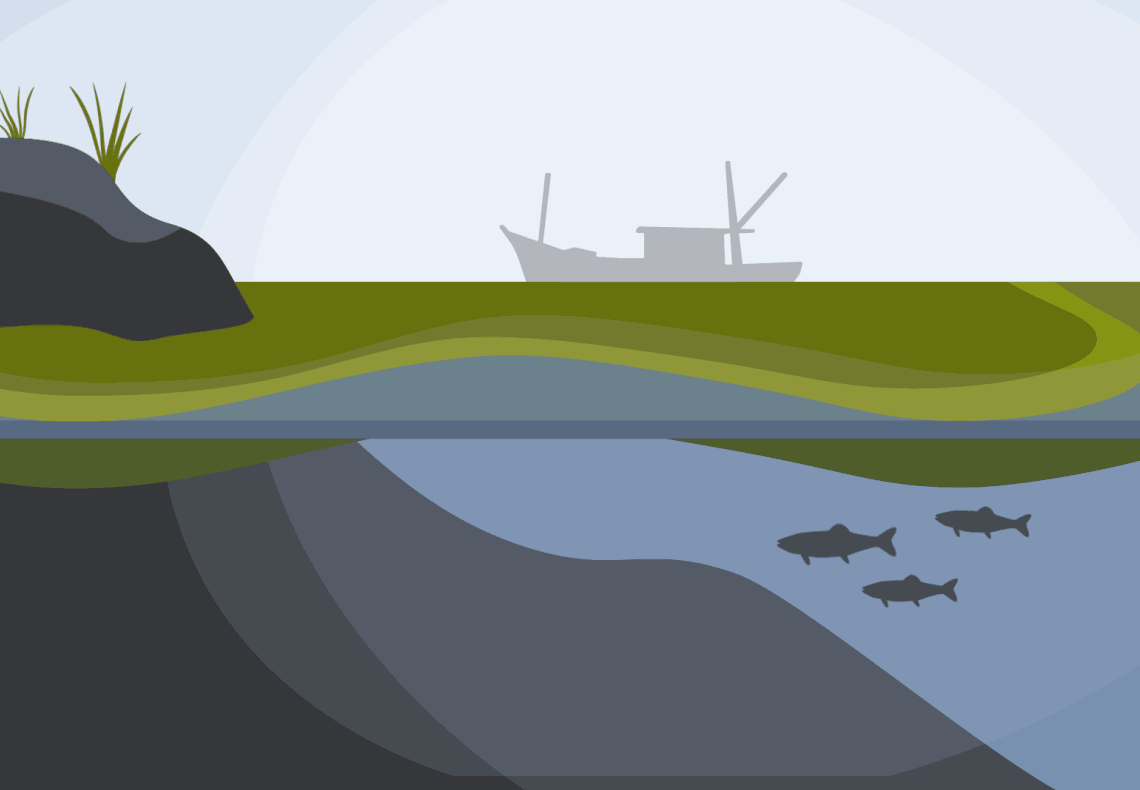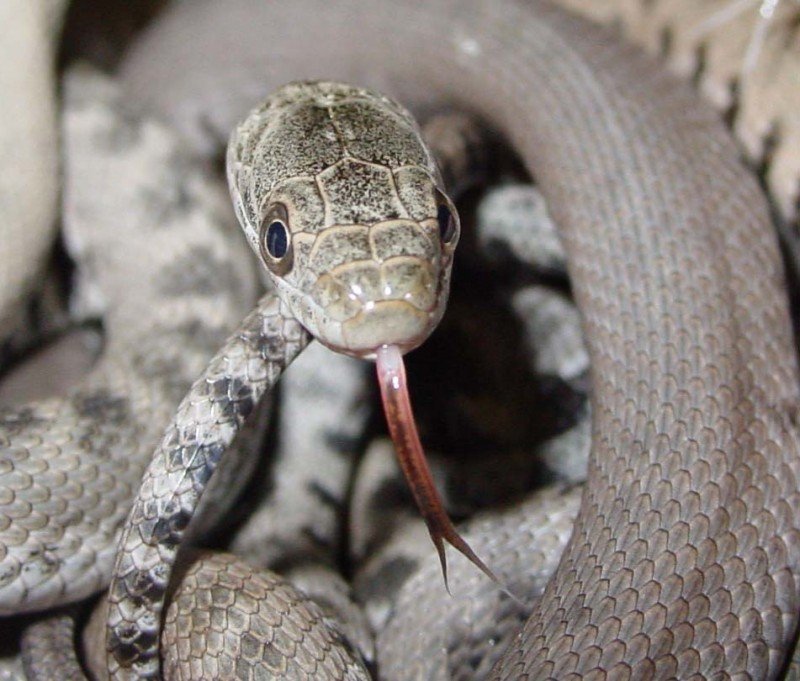Teaching Teachers
Ohio Sea Grant has a long tradition of developing curriculum for teachers and other educators. Its first formally funded research project was an education project, and giving teachers effective ways to help their students learn about the Great Lakes has continued to be a cornerstone of Sea Grant’s mission ever since.
Ohio State’s Stone Lab Partners With Ohio Foundations On Field Trip Scholarships
Ohio Sea Grant and Stone Lab, Ohio State’s island campus on Lake Erie, are offering scholarships to school groups from grades 5-12 for a one-day Lake Erie Science Field Trip at the lab on Gibraltar Island.

Community Connections
The Ohio Sea Grant Extension program connects the needs and concerns of Lake Erie communities with the people who can help address those needs, bringing new knowledge to their stakeholders through education and outreach programming and finding new ways to address problems through research and publications.

Round 'Em Up
Northern Illinois University’s Dr. Rich King and Stone Lab’s Dr. Kristin Stanford played an instrumental part in the recovery of the native Lake Erie Watersnake.
Growing, for Science
Stone Lab, Ohio Sea Grant’s research and education facility on Lake Erie, has been a home for researchers studying the lake for over a century. Over the years, upgrades and renovations have made sure that the lab keeps up with modern science needs, but of course there’s always more that could be done to make sure Stone Lab continues to be a resource for everyone studying Lake Erie.

What Are Harmful Algal Blooms?
Harmful algal blooms were all over the news after the Toledo drinking water crises of 2011 and 2014, but what actually causes these algal blooms and why are they problematic? This online fact sheet will provide you with answers about what makes up a harmful algal bloom, why they form, why they're an issue, and what you can do to help prevent them and keep yourself safe.
At the Forefront of Lake Erie Science
Water quality continues to be a top concern for Stone Lab staff and visiting researchers. A state-of-the-art Algal and Water Quality Lab houses water testing for nearby treatment plants, supports research into the lake’s harmful algal bloom problem and offers student research assistants a chance to get hands-on experience in the lab.

Developing Clean Ideas
In the summer of 2014, toxin-producing algae led to the city of Toledo shutting off drinking water for half a million residents. Once the immediate crisis was over, state agencies and Ohio universities came together to address the critical gaps in knowledge about tracking and dealing with harmful algal blooms. With funding from the Ohio Department of Higher Education, the Harmful Algal Bloom Research Initiative (HABRI) was born in 2015.

There's an App for That
Dr. Suzanne Gray at The Ohio State University is studying how suspended sediments or algae in the water affect walleye and their preferred prey, the emerald shiner. Because walleye are visual hunters, murky waters could impact their ability to find both shiners, their primary prey, and fishing lures.

Local Partners, Statewide Impacts
Monitoring the health of Lake Erie is no small task, and it can’t be done by just one person or group. So a few years ago, Stone Lab started working with private charter captains on the lake to help collect water samples and monitor algae, toxin and nutrient levels.
Lake Erie charter boat captains have been helping Stone Lab monitor water quality since 2013, when the lab took over the sampling program from the Ohio Environmental Protection Agency. The captains collect water samples during their regular fishing cruises, greatly expanding the number of water samples available for analysis during the harmful algal bloom season.

Restoring Rivers, Supporting Local Economies
It’s a beautiful day in Ashtabula Harbor, just a few miles from the Ohio-Pennsylvania border. A few recreational boats from the marina upstream pass by benches on the boardwalk along the river, and farther north, commercial freighters are loaded with coal for export to Canada and overseas.

Harmful Algal Bloom Research Initiative Year 3 Report
The third-year report continues to show that the state of Ohio has benefited from the Harmful Algal Bloom Research Initiative.

Making Lake Erie Science Come Alive
It’s been 40 years since The Ohio State University’s Center for Lake Erie Area Research (CLEAR) was first recognized as Ohio’s home for the National Sea Grant College Program, whose dedication to supporting the practical use and conservation of coastal, marine and Great Lakes resources to create a sustainable economy and environment has helped coastal and Great Lakes communities for over 50 years.

Cleaner Is Better
Summer’s here and the time is right… for boating on the lake!
Or just about any other body of water in the state of Ohio. More than half a million boats were registered here in 2017, and all that traffic can leave a mark on Lake Erie, the Ohio River and other rivers and lakes throughout the state. To keep the environment safe and healthy for the future, the Ohio Clean Marinas Program, supporting marinas and boaters in good decision-making, came to be in 2003.

A Living Laboratory
Lake Erie plays a big part in the lives of Ohio residents, from providing drinking water and seafood to creating memories of family vacations and weekend fishing trips. But for some, it can be difficult to see that connection without an experience that draws a specific link between the lake and their personal life. Stone Lab, Ohio Sea Grant’s research, outreach and education facility on Gibraltar Island, aims to make that link more explicit.

Testing, Testing
Stone Lab, Ohio Sea Grant’s teaching and research facility located on South Bass Island, plays a large role in making sure island residents can be confident that their tap water is safe. From research into what turns algal blooms toxic to the nitty-gritty details of weekly water testing for the islands’ water treatment facilities, Stone Lab staff serve their island communities in a variety of ways.

What Are Harmful Algal Blooms? Online Fact Sheet
This online fact sheet will provide you with answers about what makes up a harmful algal bloom, why they form, why they're an issue, and what you can do to help prevent them and keep yourself safe.
Genetic Information Helps Keep Great Lakes Fishes Healthy
It’s been almost a decade since the first outbreak of viral hemorrhagic septicemia virus (VHSv) was seen at the University of Toledo’s Lake Erie Center in the summer of 2006. Dead fish washed up on shore, while others struggled in the shallow water, all showing bright red lesions on their bodies. VHSv is essentially the Ebola of the fish world: a highly contagious virus that causes erratic behavior, internal bleeding and death.
Dr. Carol Stepien, Director of the Lake Erie Center and Professor of Ecology at the University of Toledo (UT), has worked on VHSv in Great Lakes fishes ever since that first outbreak at the beach across the road.

Stone Lab Field Trips - Not Just For Kids
While summers at Stone Lab, Ohio State’s island campus on Lake Erie, are filled with college classes and research projects, spring and fall offer a whole new set of opportunities to students of all ages. Lake Erie Science Field Trips take participants out on the lake on a research cruise, where students trawl for fish and collect water samples, and back into the lab on Gibraltar Island, where a fish dissection gives participants a chance to learn how some of Lake Erie’s inhabitants tick.

Eighty Years of Tiny Lake Erie Critters
It’s easy to get excited about new science: new discoveries, cool things that have never been seen before, a new solution to an old problem. But sometimes, it’s worth taking a step back to look at what’s been done before, and how history can inform future research.
The U.S. Geological Survey (USGS) has been collecting information on western Lake Erie benthos – the mollusks, snails and worms that live in sediments on the lake bottom – since the 1930s.